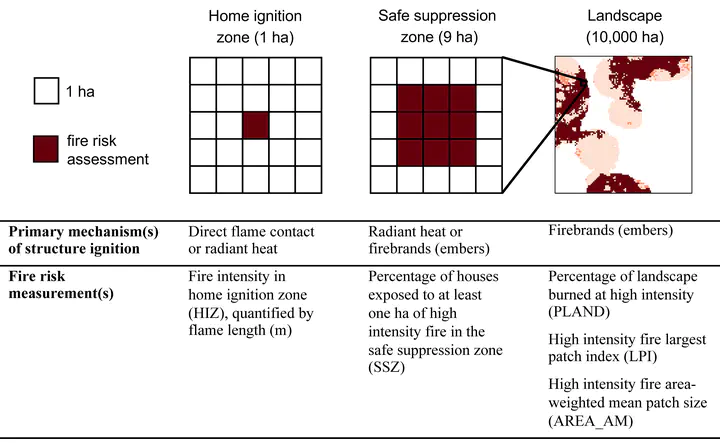Can we manage a future with more fire? Effectiveness of defensible space treatment depends on housing amount and configuration

Abstract
Context: Fire in forested wildland urban interface (WUI) landscapes is increasing throughout the western United States. Spatial patterns of fuels treatments affect fire behavior, but it is unclear how fire risk and fuel treatment effectiveness will change under future conditions.
Objectives: (1) How do area burned, forest and fuel characteristics, and fire risk change over time under twenty-first-century climate? (2) When defensible space fuels treatments are applied around all houses, which scenarios of WUI housing amount and config- uration minimize fire risk?
Methods: In generic 10,000-ha US Northern Rocky Mountain subalpine forest landscapes, we simulated 21 scenarios differing in fuels treatment, housing amount and configuration (neutral landscape models), and projected future climate using the process-based model iLand. We compared fire risk at three scales: 1-ha home ignition zone (HIZ), 9-ha safe suppression zone (SSZ), and landscape.
Results: Under warm-dry climate, annual area burned increased, but area burned at high fire intensity peaked in the 2060s and then declined sharply; fire risk followed similar trends. Defensible space treatments maintained low flame lengths in HIZs. Clustered housing was more effective at reducing SSZ risk compared to dispersed housing. At landscape scales, treating more of the landscape reduced fire risk but configuration was unimportant.
Conclusions: The most effective strategy for reducing fire risk depends on the scale at which risk is assessed. Clustering WUI developments and treating between 10 and 30% of the landscape every 10 years can reduce fire risk across multiple scales.